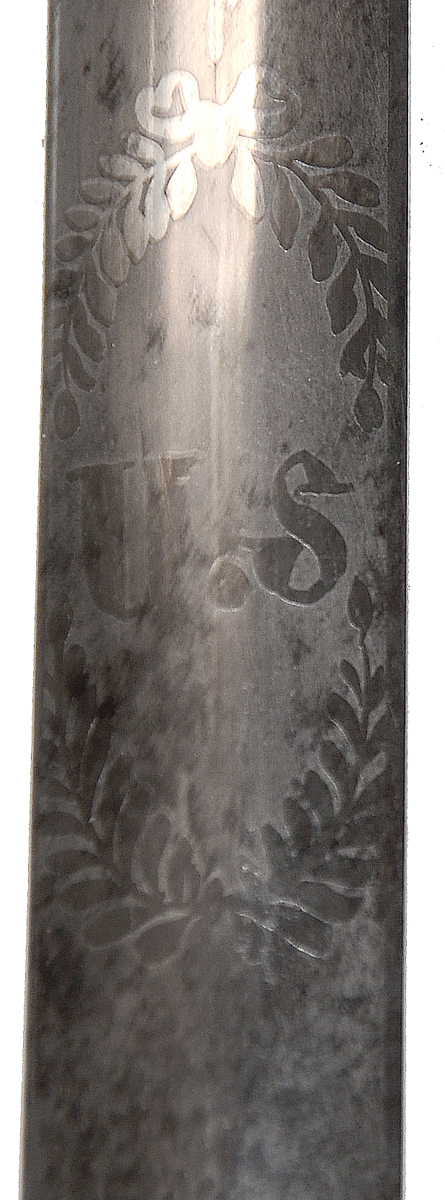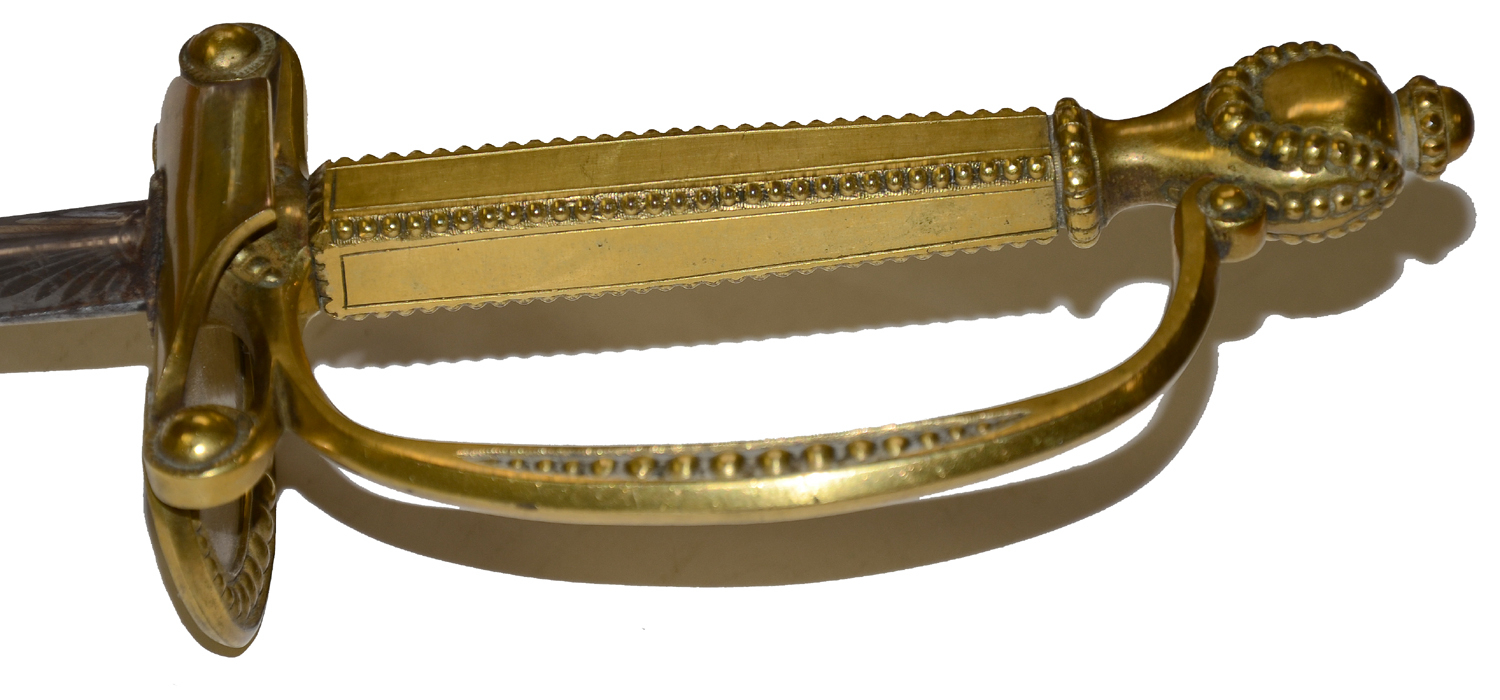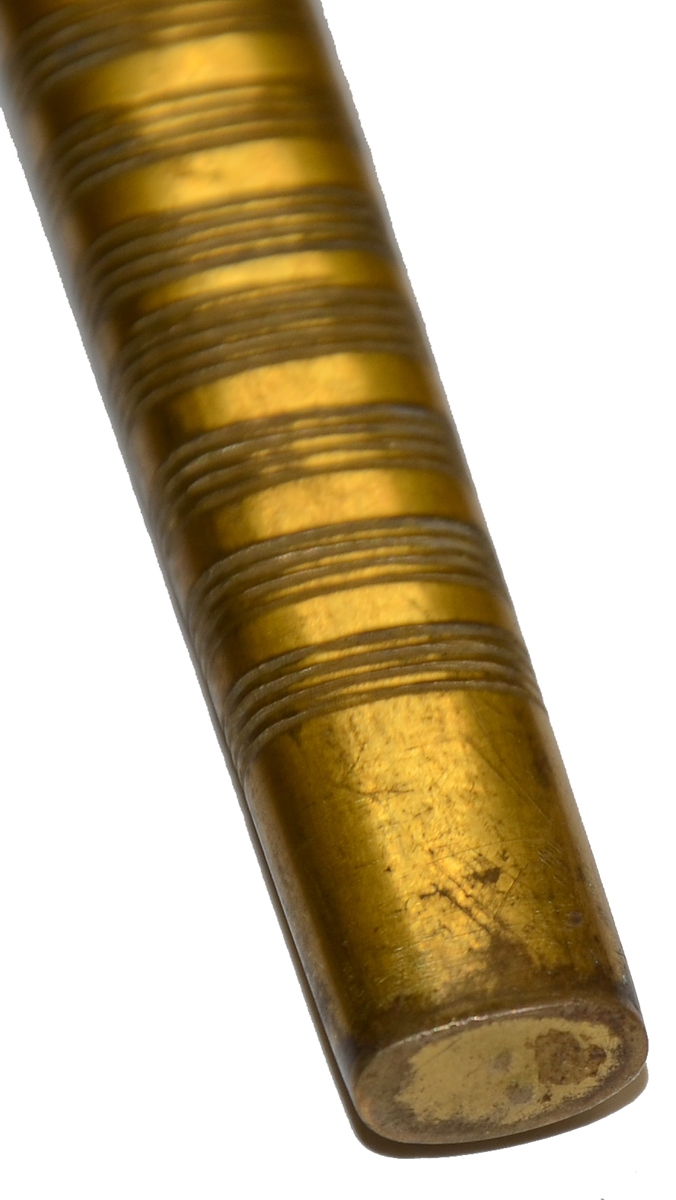site search
online catalog
VERY RARE 1834 ENGINEER AND MEDICAL STAFF SWORD BY HENRY BOKER, BELONGING TO BREVET BRIGADIER GENERAL JOHN HENDRICKSON, WHO LOST A LEG AT FREDERICKSBURG, 83rd NEW YORK VOLS (9th NYSM) AND 13th V.R.C.

Hover to zoom


























$3,375.00
Originally $4,500.00
Quantity Available: 1
Item Code: 870-325
Shipping: Determined by Method & Location of buyer
To Order:
Call 717-334-0347,
Fax 717-334-5016, or E-mail
New patterns of swords for the U.S. army were developed from 1832 to 1834. This elegant smallsword pattern (variously called by collectors the 1832 or 1834 pattern) was designated for officers of Engineers and Medical Staff (and Pay Department as well,) based upon older French court swords and current British diplomatic swords. This is very scarce sword. The regular army was very small patterns changed again starting in 1840. Differences in the length of the grip and blade shape supposedly set apart those intended for Engineers, but these seem to have been inconsistently observed. See Thillmann, U.S. Army Swords, for a discussion of the pattern.
The hilt is gilt brass with a beaded, urn-shaped pommel, slightly tapering square grip, and counterguard. The beading of the pommel is repeated on the sides of the knucklebow, the band at top of the grip, and the edges of the grip, and the upper borders of the inner and outer counterguard. Both the inner and outer counterguards have plain centers. The outer guard has the beading around its edge on the underside as well. The crossguard has two ball-finial quillons that are turned forward (some examples have only one.) The hilt preserves probably 90 percent of its finish, with just minor rubbing at edges and some dark spots in the channels of the beading on the counterguard.
The blade pad is in place. Hilt and blade are tight. The blade is elliptical in cross-section. The metal is smooth, with good edge and point, with some minor graying, but mostly bright with very visible etching on the frosted panels on both sides of the blade. The motifs include a palmette at base, a stand of arms and floral scrolls, as well as a horizontal “US” in a wreath on the obverse and an American eagle perched horizontally across the blade with an arc of stars overhead and sunburst rays above and below on both sides. The frosting terminates in elongated leafy points.
The scabbard, like the sword is excellent. The black leather body is solid, with good seam, no bends or breaks, and good color with a dull finish. The long brass upper and lower mounts are in place and match the hilt in having lots of their original gilt finish, engraved lines in groups of four and rounded heart-shaped frog stud with a beaded edge matching in miniature the beaded decoration of the hilt.
The ricasso of the blade is drypoint etched, “H. Boker / Remscheid.” Henry and Robert Boker set up in business making knives and other blades in Remscheid, close to Solingen, in 1829. They came to America in 1837, Robert setting up shop in Canada and Henry in the U.S., importing blades made by their cousin Henry. This is likely one of Boker’s earliest efforts to get into the U.S. military goods market and could conceivably have been imported by a U.S. dealer before the Bokers emigrated since Ames was having problems in the early fabrication of the 1834 patterns.
In any case, the sword was owned by officer with a Civil War combat record and brevet to brigadier general. The counterguard preserves a paper auctioneer’s tag glued to the underside that reads, “Dress sword belonged to General John Hendrickson.” The label is from the auction company of O. Rundle Gilbert, a longtime auctioneer based in Garrison, NY, who died in 1989. Hendrickson (1833-1902) had been born in New Jersey, but was a dry-goods merchant in New York City when the war began. He was commissioned a First Lieutenant in the 9th NY State Militia on April 27, 1861 and mustered in at that rank in Co. G of the regiment, designated the 83rd NY Volunteers, on May 27, 1861. He was mustered in as Captain July 1, 1861; Major Oct. 1, 1862; and Lt. Colonel November 27, 1862. During his term with the regiment were engaged with casualties at Harpers Ferry, Cedar Mountain, Second Bull Run, South Mountain, Antietam, Fredericksburg, where Hendrickson was wounded in action, resulting in the loss of his left leg. He was commissioned Colonel in February 1863, and mustered in at that rank to date January 18, 1863, but was discharged for disability from wounds on August 3, 1863. He then joined the 13th Regiment of the Veteran Reserve Corps as Major August 28, 1863 and Colonel October 5, 1863. He received a brevet as Brigadier General of Volunteers for gallant and meritorious service during the war to date March 1865 and was honorably mustered out June 30, 1866. He returned to New York City, married, and died there in 1902.
This is a rare pattern of sword, in excellent condition, with a good identification to an active officer. [sr] [ph:L]
~~~~~~~~~~~~~~~~~~~~~~~~~~~~~~~~~~~
THIS ITEM, AS WITH ALL OTHER ITEMS AVAILABLE ON OUR WEB SITE,
MAY BE PURCHASED THROUGH OUR LAYAWAY PROGRAM.
CLICK HERE FOR OUR POLICIES AND TERMS.
THANK YOU!
Inquire About VERY RARE 1834 ENGINEER AND MEDICAL STAFF SWORD BY HENRY BOKER, BELONGING TO BREVET BRIGADIER GENERAL JOHN HENDRICKSON, WHO LOST A LEG AT FREDERICKSBURG, 83rd NEW YORK VOLS (9th NYSM) AND 13th V.R.C.
Most Popular
Historical Firearms Stolen From The National Civil War Museum In Harrisburg, Pa »
Theft From Gravesite Of Gen. John Reynolds »
Selection Of Unframed Prints By Don Troiani »
Fine Condition Brass Infantry Bugle Insignia »
featured item
VERY FINE, VERY RARE .36 CALIBER, 6-CAVITY GANG MOLD FOR COLT M1851 NAVY REVOLVER
Measuring 13” long, this iron bullet mold casts six .36 caliber elongated pistol bullets. Turned wood handles and brass ferrules are fitted over the arms of the mold halves. The sprue cutter is attached to the top at the hinge pin and swings from… (1304-117). Learn More »
site search
Upcoming Events
The shop is currently closed so that we may conduct our annual inventory. We are available by phone… Learn More »


